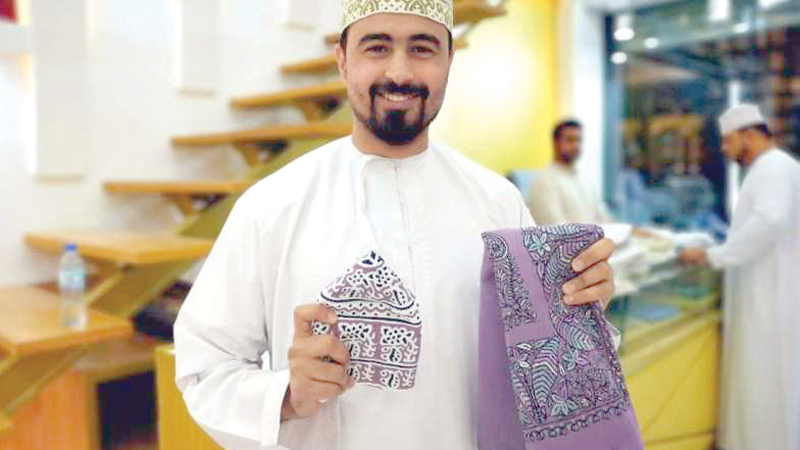

Muscat, June 4 -
Part of celebrating Eid al Fitr is wearing new clothes. Men and women dedicate time to choose the best of attires for the occasion. The tailors get busy during the season.
An integral part of men’s attire is the mussar — the turban which adds prestige to the wearer. But gone are the days when it was just part of the overall costume. A few minutes with the shoppers preparing for Eid al Fitr reveal the mussar preferences of youth.
The square shaped fabric is first folded to form a triangle, then placed on the head with two edges twisted and are fastened on the sides one after the other. But the art is in getting in the embroidery folded at the right place.
The good thing is the youth themselves are proud of the traditional attire. Ijaz al Qureshi, who is busy with customers helping them to choose mussar that meets their individual taste, took time to explain to us, “The ultimate choice has to be Pashmina mussar. The difference is the softest material. Traditionally this is the type of mussar that has been popular. Mussar is a historical tradition of Oman and the Sultanate is very particular about its traditions.”
Kashmir has been an important source for Omani Pashmina mussar. What is important is the Omani style embroidery explained young Junaid Jawad who has come to shop for mussar with his father. “The younger crowd likes lighter colours for Eid. For me it has to be white with light coloured embroidery. We like to stay away from the dark colours.”
But his father interrupted, “I think I would like Junaid to have some blue in the embroidery.” While the father and son continued the search, another customer, Salim was choosing his mussar in a unique way.
Salim explained: “You hold the folded mussar at the forehead with embroidery in the front. This gives you an insight on whether the particular colour and embroidery suits your face or not.” When asked how much he would spend on a mussar, he thoughtfully replied, “It depends — if it is for daily use, a mussar worth RO 30 to RO 45 would be ideal. If the occasion is grand, then would invest in the needful variety accordingly.”
Yet another customer has completely different plan. He has the colour set not just in his mind, but he has already chosen the shade to be for the theme line embroidery of his dishdasha placed around the neck and at sleeve ends. So the mussar has to be in the same colour too. The latest trend does not stop there.
“This year the kuma also has to be in the similar colour combination of the mussar. So when you remove the mussar, the kuma is also coordinated with the embroidery of the dishdasha.”
A kuma could range from RO 5 to RO 20. The distinguished ones are usually the handmade kumas. The handmade kumas could also be costlier than the machine made ones.
Oman Observer is now on the WhatsApp channel. Click here



